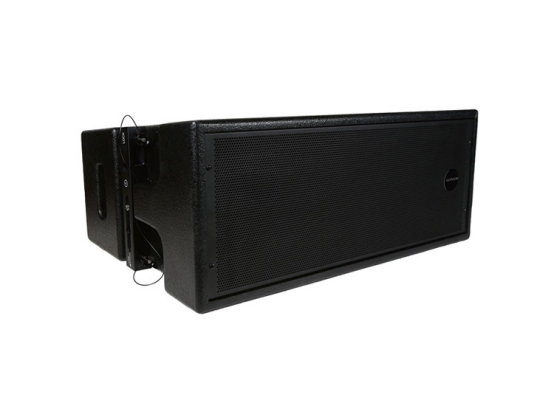Resources
Products
At live performance venues and on television programs, we often see line array speaker boxs. They usually look very impressive and offer you an excellent sound experience. Why is their sound quality so good and how do they differ from regular speakers? This article provides the answers.
Line array speaker boxs, also known as linear array speakers, consist of a group of closely spaced radiating units arranged in a straight line, with the same amplitude and phase. Regular speakers, on the other hand, are devices that convert audio signals into sound. Simply put, they are a combination of a speaker and a power amplifier. The power amplifier amplifies the audio signal, and the speaker then emits the sound, achieving the effect of louder sound.
Line array speaker boxs are long-distance speakers usually applied in large indoor and outdoor venues such as large stadiums, performance venues, large lecture halls, and multi-functional halls. Regular speakers are short-distance speakers used in smaller venues such as small to medium-sized conference rooms, reception rooms, and small briefing halls. If regular speakers were used in a large outdoor venue to meet the sound reinforcement needs, a large number of regular speakers would be needed, and it would be hard to satisfy the sound pressure level in the middle audience area, often leading to low sound levels.
Generally, the units of line array speaker boxs have a higher power handling capacity to avoid burning out during use. Moreover, line array speaker boxs are mostly three-way, equipped with bass, midrange, and treble units. Regular speakers, however, have lower power and are mostly two-way. For example, the total power of regular speakers is 4000W, while the total power of line array speakers is 6960W. Additionally, assuming the same speaker sensitivity, the higher the speaker power, the higher the sound pressure level.
The special structure of line array speaker boxs allows them to diffuse sound as a linear source, while regular speakers diffuse sound as a point source. Compared to linear sources, point sources have a larger diffusion angle. You can understand the concept of diffusion angle by thinking about lights: consider the searchlights we often see at night, which shoot a beam straight into the sky like a line, compared to street lights, which illuminate the surroundings but significantly drop in brightness as you move farther away.
A single regular speaker usually has a larger diffusion angle, typically 90°H×60°V. A single line array speaker box typically has a smaller diffusion angle, usually 120°H×10°V, but the diffusion angle can be increased by adding more speakers.
After arraying, line array speaker boxs, due to effective coupling and superposition among the speakers, improve radiation efficiency, achieving long-distance radiation. The sound waves form a narrow beam in the vertical plane along the main axis, allowing the sound to reach most of the audience area directly. This ensures a good listening experience from the front row to the back row, so the audience can hear clear sound.
In comparison to line array speaker boxs, regular speakers have lower sound pressure levels and a larger coverage area. According to the sound pressure level calculation formula, within the critical distance range of line array speakers, the sound pressure level attenuation of regular speakers is twice that of line array speakers. Therefore, regular speakers cannot achieve long-distance sound delivery; the sound level drops significantly when the distance increases.

Gonsin is here to offer you the customized solutions for conference audio and video system.